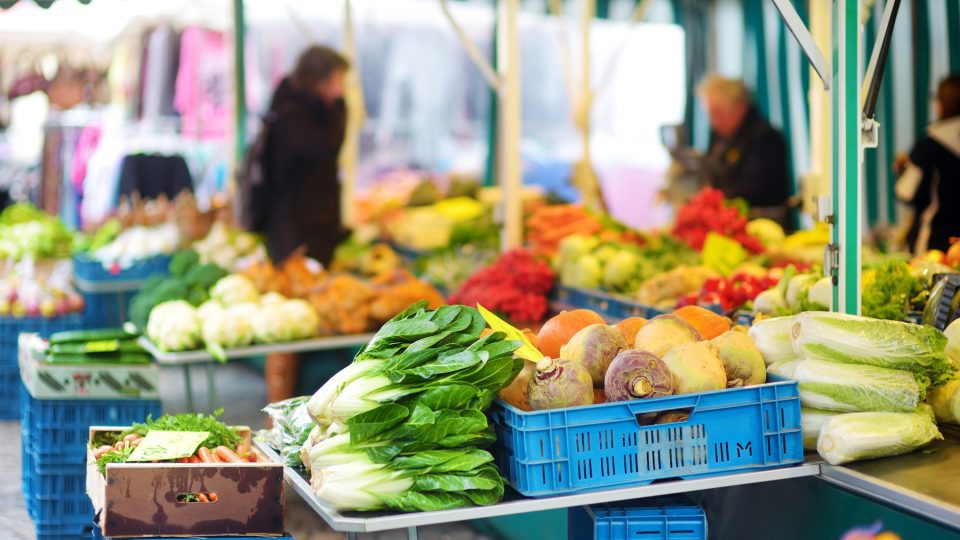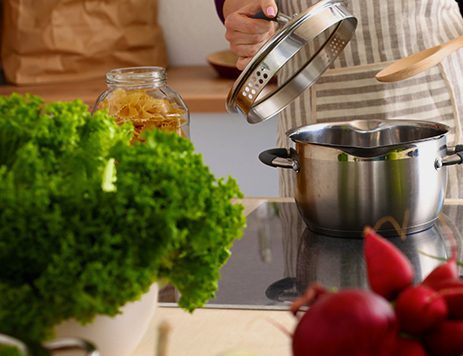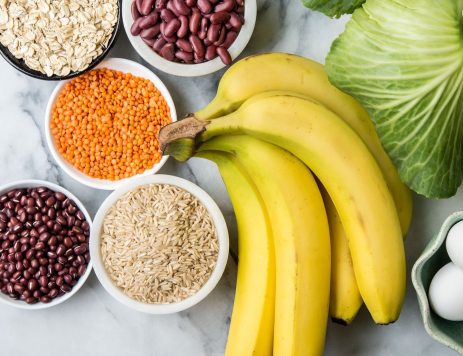
How to Get the Most From Your Farmers Market
It doesn’t get any fresher than straight from the farm. The taste of a locally grown summer tomato or a fresh-picked apple will win over kids and adults alike. Look for the picks below at your local farmers’ markets to get the most flavor from every season.
Spring
- Lettuce: Crisp and succulent, there’s nothing like a head of just-picked lettuce. Chop or tear leaves for your favorite salads or try lightly grilling a head of romaine and topping with your favorite vinaigrette.
- Peas: These gems should be eaten as quickly as possible before their sweet flavor diminishes. Pick peas that are plump and bright green. Enjoy them raw, steamed or stir-fried for a naturally sweet side dish that’s rich in Vitamins A and C.
- Spring Onions: Look for bright white bulbs and green tops that are dry and free of damage. Purple spring onions have more anthocyanins (an important antioxidant) and a fuller flavor. Spring onions are a great loaded baked potato or Asian-style stir-fry topping.
- Beets: Sweet, delicious and full of iron. Look for bunches with green leaves for a fresh spinach replacement. Yellow beets have a milder flavor, and go great with oranges or mild, creamy cheeses.
- Radishes: Their cool crunch and sharp mustardy flavor are a springtime favorite. Look for bunches with undamaged green tops and no cracks in the bulbs. Try slicing them thin and marinating in champagne salad dressing for an inspired salad.
- Arugula: This sawtoothed green is known for its peppery and nutty flavor. It’s great in salads and sandwiches, or tossed with a hot pasta dish until slightly wilted. The leaves are packed with Vitamins A and K.
Summer
- Tomatoes: Try different colors for new flavors and added antioxidants. Purple, yellow, pale white and green tomatoes will amaze you with their varied flavors. Store tomatoes at room temperature and eat them within two days.
- Cucumbers: Cool and crisp, cucumbers are perfect on a hot summer day. They’re also packed with natural electrolytes. Throw some slices and a sprig of mint in your ice water for a refreshing twist or try homemade pickles.
- Strawberries: Depending on the variety, strawberries can be found at the end of spring and all the way into fall. Early varieties tend to be small and very sweet, while later varieties tend to be larger and are great for pies.
- Corn: There’s nothing like a fresh ear of sweet corn! Try it raw in salads, or grill it whole in the husk.
- Squash: Look for plump and brightly colored squash with un-wilted stems. If you’re able to find the tender squash flowers, snap them up for stuffing and frying. Keep the skin on for added nutrients.
- Peppers: While peppers are in season, look for varieties you can’t always find like poblanos, cherry, and white bell. Peppers are a great afternoon snack with your favorite dip!
- Swiss Chard: Sometimes called summer spinach, Swiss chard is great in sautés and noodle dishes. It’s also rich in Vitamin A and carotenes, and comes in a rainbow of fun colors.
Fall
- Broccoli: Its deep green florets are a storehouse for unique phytonutrients and antioxidants. Try oven-roasting for a warming side, or toss it in a cheesy potato soup for a one-pot meal. Broccoli even tastes great raw with blue cheese veggie dip.
- Winter Squash: A staple for early American colonists, winter squash will keep for weeks if stored in a cool, dry place. Roast squash for the sweetest flavor; then puree it for soups, cakes, muffins and more.
- Apples: Apple season can stretch from late summer to late fall depending on the variety and where you live. Look for regional gems that grow especially well in your climate. Varieties often have very specific uses so be sure to ask if it’s an “eating” apple or a “cooking” apple.
- Collard Greens: A Southern classic, they are rich in calcium, manganese and a host of vitamins. Try using tender leaves in place of a tortilla for your next wrap!
- Brussels Sprouts: These humble veggies resemble tiny cabbage heads on a long, green stem. Try roasting them with bacon and apples, or braise them in white wine.
Winter
- Parsnips: They look like carrots and taste like a mild sweet potato. These roots taste best after a winter frost and are high in Vitamin C and manganese.
- Kale: Rich in Vitamins A, C and K, kale’s also one of the most cold-hardy crops. Try baking kale chips as a tasty snack for the family.
- Carrots: Winter carrots are sweeter because the cold temperatures cause an increase in the plant’s sugars. They’re perfect for roasting or glazing.
- Celery Root: A hearty root with a texture similar to potatoes and a flavor like mild celery, try it boiled and mashed for a unique and filling side dish.
- Turnips: The peppery mustard flavor of these winter roots goes great in stews or roasts. They’re also high in fiber, full of antioxidants and low in calories.
When you buy food from local farms, you source fresh food and support a healthy economy. Don’t be afraid to ask your farmers about produce coming into season. Local fruits usually have a short seasonal window that varies depending on your area.



